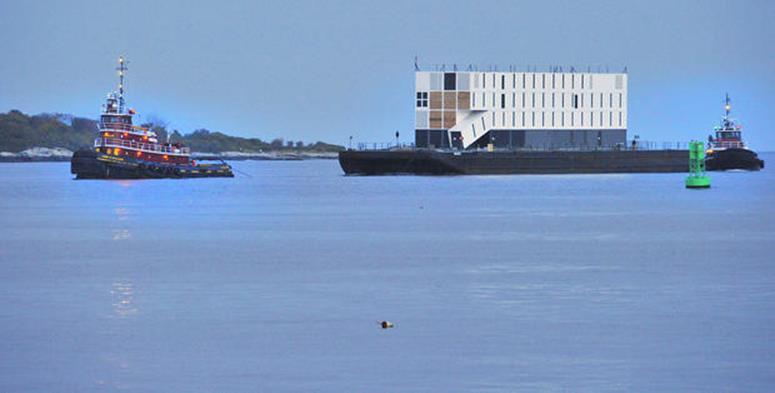Safety First! A Lesson from Google’s Barge Bust
In a coastal city like Portland, Maine, it takes a lot for a ship to draw attention. All manner of maritime vessels ply the waters of Casco Bay surrounding Portland, from the ubiquitous lobster boats to the Casco Bay ferries, the behemoth oil and gas tankers, one-person Lasers and everything in between. The launch of the Nova Star ferry offering overnight service to Nova Scotia was big news, but that still didn’t nab as many inquisitive looks or headlines as this mysterious vessel did when it was towed into Portland in the summer of 2013:
Being a small city, word traveled fast, as did the questions: What the heck is it? Are those apartments? Who built it? What’s it doing in Portland? And the boat’s owners, to their credit, kept quiet and let the suspense build. For a few weeks, you couldn’t go into a local watering hole and not hear at least a question or two about this mysterious vessel.
In October of 2013, tech site CNET broke the news that this was one of two vessels, the other in San Francisco Bay, that were owned by Google and were being outfitted in their respective ports for a still unnamed purpose. Around town, the theories began to sprout: It’s a floating data center! It’s a showroom for Google Glass! It’s a party boat for their executives! It’s subsidized apartments! But in the end, what it really ended up being was a colossal waste.
It turns out that, while Google intended for these to be invite-only floating showrooms for its high tech gadgets, it skipped the fundamental rule in developing them – safety first. Coast Guard concerns about the amount of fuel being kept on the main deck (since it’s a barge it lacks traditional fuel containment areas) and a lack of suitable safety measures meant the project had to be scuttled. The Portland barge has been dismantled and sold as scrap, and the San Francisco barge now sits as an expensive monument to a lack of foresight and a lesson to everyone else about what happens when you don’t think about safety first.
Sure, this would have been a very cool feather in Google’s cap, and a pretty neat place to check out their latest innovations. But Google was insistent on putting cool before safe, and as a result, all they have to show for it are piles of scrap and over $4 million in bills. Google’s fundamental flaw with this project was that it put concerns about being cool and secretive over its concerns about safety. In fact, secrecy was so important that Google somehow induced the U.S. Coast Guard into entering into confidentiality agreements regarding the project – a decision the Coast Guard now regrets, and one would assume Google does as well.
In this instance, Google’s multi-million dollar mistake provides others with a free lesson – when developing a product, make sure you put safety first. Know the product’s safety requirements, the laws and regulations that cover it, what it can and can’t have or be made of, etc., and make sure you design and build around meeting those requirements first and foremost. And your best bet to know or learn all of those requirements is to consult with an expert who knows the products and the laws surrounding them. Top secret covert ops can be a great way to generate buzz and interest in a product, but make sure that secrecy and PR image don’t trump safety and stick to the rule: safety first.

